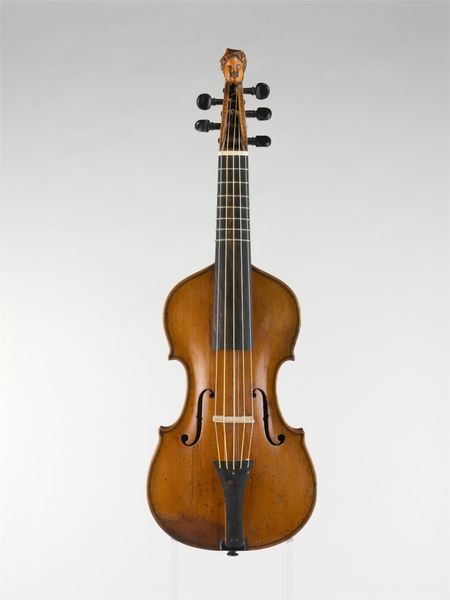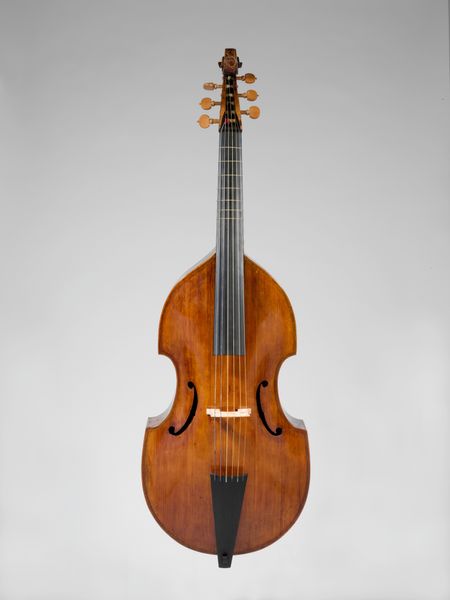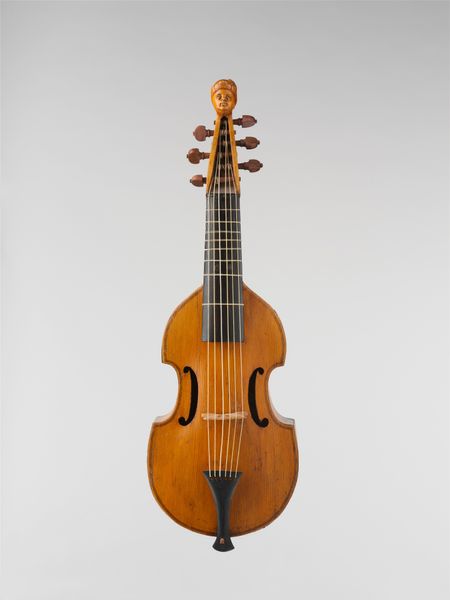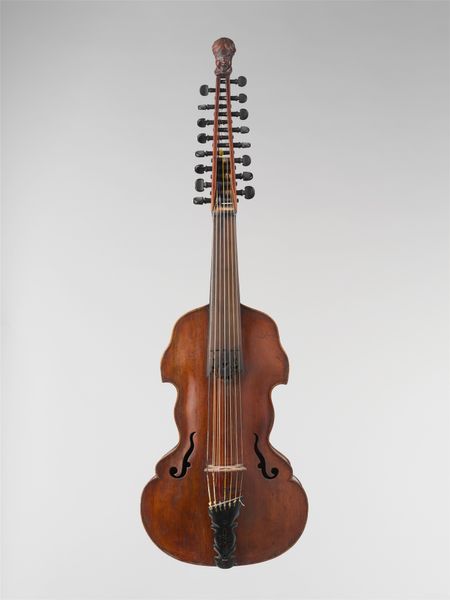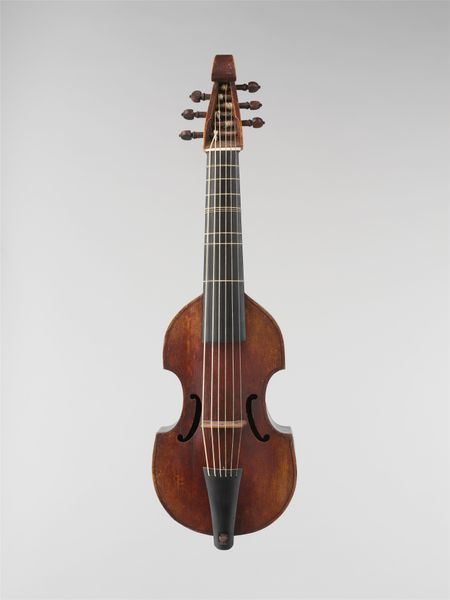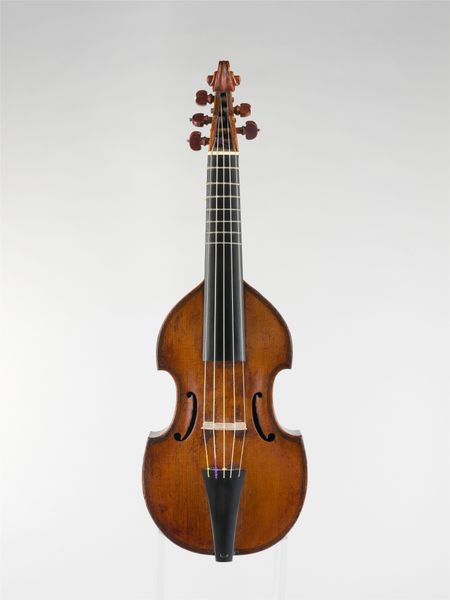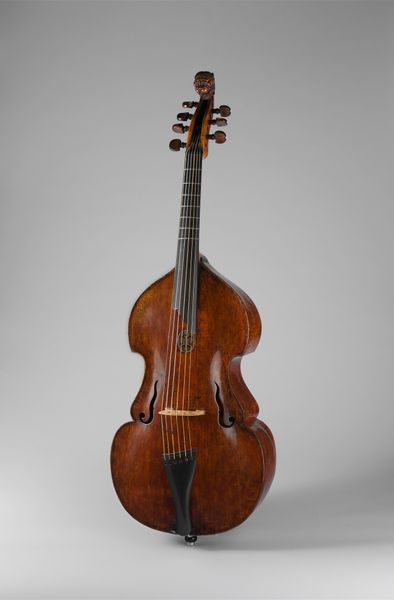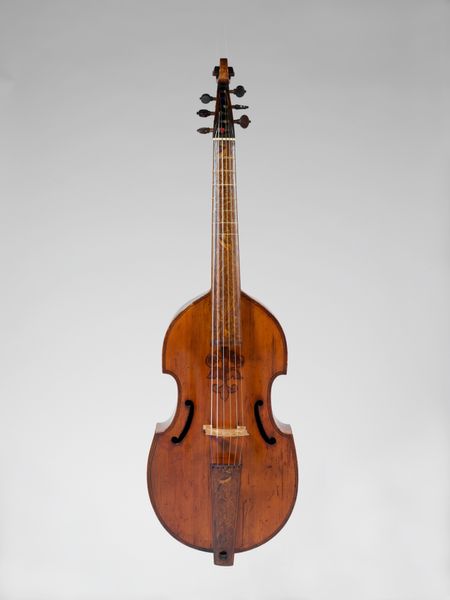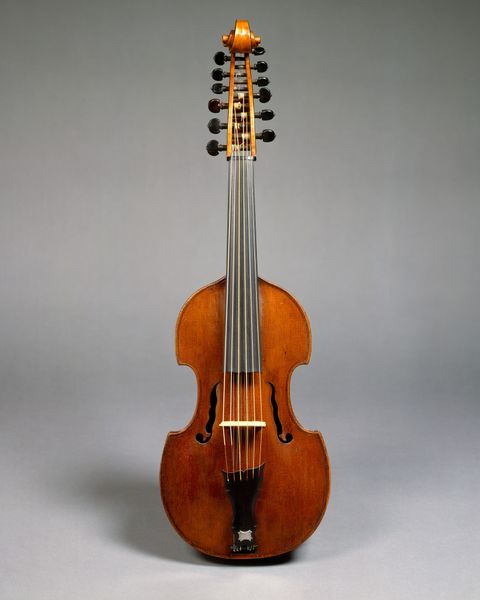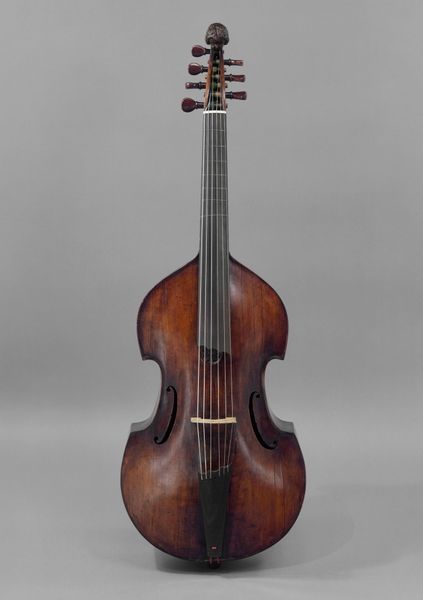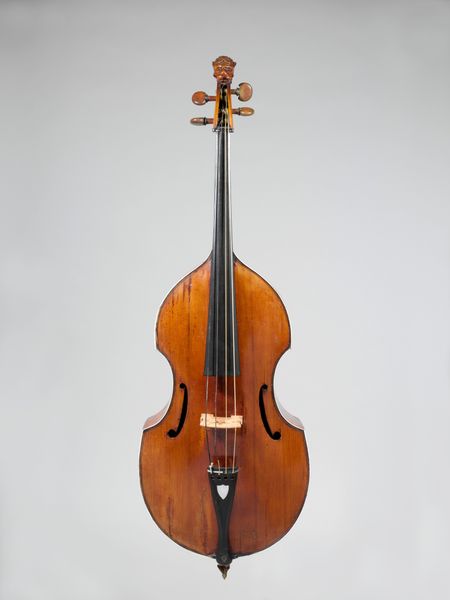
wood
#
baroque
#
sculpture
#
wood
#
musical-instrument
Dimensions: 25 1/8 × 7 1/4 × 2 in. (63.8 × 18.4 × 5.1 cm)
Copyright: Public Domain
Curator: Standing before us is a “Mute Viola d'Amore,” crafted sometime between 1730 and 1760, and attributed to Daniel Achatius Stadlmann. It’s currently held here at the Metropolitan Museum of Art. Editor: Oh, she's lovely. The wood grain just shimmers like liquid honey. And so many strings! Makes me want to hear the kind of sweet melancholy she must have played. Curator: Indeed, the viola d'amore experienced a surge in popularity during the Baroque period, finding a home in both secular and sacred musical settings. The additional resonating strings, contribute to its unique timbre. Editor: Baroque, yes, but looking at it, it feels both opulent and strangely… contained? Is it because it’s muted? As if it’s holding back some grand, dramatic aria. Or maybe someone’s confession of the heart. Curator: That containment might well arise from the construction itself. This instrument wouldn't have been projected widely in large concert halls, but in smaller more intimate settings. Mutes reduce volume to allow chamber playing and the silent practice which made such exquisite music possible. Editor: Practice, huh? I get that. There's always a tension there, between the messy struggle to make something beautiful and the poised performance that comes from it. Seeing all those strings makes my fingers ache just thinking about it. But then you imagine the music it helped bring into the world, right? All those swirling harmonies and dramatic flourishes… It's enough to make you want to learn to play it yourself. Even with the finger aches. Curator: And this instrument reflects certain power dynamics too. Who had access to private musical education? Who were the audiences in those intimate settings? The silent practices behind the performances were carefully controlled displays of status as well as artistry. Editor: So it’s more than just an instrument. It’s a window onto the society that valued and enabled such delicate craftsmanship. And it also suggests all these emotions – passion, yearning – were filtered and framed in that specific way during its time. Curator: Precisely. This “Mute Viola d'Amore” gives a glimpse into the relationship of wealth, taste and skill in the 18th Century, which shaped not only art objects but the human experiences that drove their creation. Editor: That’s the thing with art, isn't it? Even when it's silent, it has so much to tell us.
Comments
No comments
Be the first to comment and join the conversation on the ultimate creative platform.
